American Experience - Season 31

Season 31

Episodes
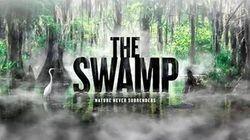
The Swamp
The Swamp tells the dramatic story of humanity's attempts to conquer the Florida Everglades, one of nature's most mysterious and unique ecosystems. Home to a profusion of plants and animals found nowhere else on the continent, the Everglades was an immense watershed covering the southern half of the Florida peninsula. In the 19th century, however, most Americans believed swamps were filled with diseases and noxious reptiles and saw them as obstacles to the nation's progress. The idea of draining the Everglades became the goal of many entrepreneurs, politicians and salesmen who saw great potential in turning the massive wetland into a profitable enterprise. Altering the landscape of the Everglades unleashed a torrent of unintended consequences, from catastrophic floods to brutal droughts. Told through the lives of a handful of colorful and resolute characters, from hucksters to politicians to unlikely activists, The Swamp explores the repeated efforts to transform what was seen as a vast and useless wasteland into an agricultural and urban paradise, ultimately leading to a passionate campaign to preserve America's greatest wetland.

Sealab
On a February day in 1969, off the shore of northern California, a US Navy crane carefully lowered 300 tons of metal into the Pacific Ocean. The massive tubular structure was an audacious feat of engineering — a pressurized underwater habitat, complete with science labs and living quarters for an elite group of divers who hoped to spend days or even months at a stretch living and working on the ocean floor. The Sealab project, as it was known, was the brainchild of Captain George Bond, a country doctor turned naval pioneer who dreamed of pushing the limits of ocean exploration the same way NASA was pushing the limits of space exploration. As Americans were becoming entranced with the effort to land a man on the moon, these Navy "Aquanauts," including one of NASA's most famous astronauts, Scott Carpenter, were breaking depth barrier records underwater. "Sealab" tells the little-known story of the daring program that tested the limits of human endurance and revolutionized the way humans explore the ocean.
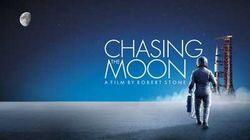
Chasing the Moon: A Place Beyond the Sky
Part one begins in 1957 and tracks the early years of the space race as the United States struggles to catch up with the Soviet Union. The episode reveals breathtaking failures and successes of the nascent American space program and demonstrates the stakes and costs of reaching the moon.
"Chasing the Moon," a film by Robert Stone, reimagines the race to the moon for a new generation, upending much of the conventional mythology surrounding the effort. The series recasts the Space Age as a fascinating stew of scientific innovation, political calculation, media spectacle, visionary impulses, and personal drama. Utilizing a visual feast of previously overlooked and lost archival material — much of which has never before been seen by the public — the film features a diverse cast of characters who played critical roles in these historic events. Among those included are astronauts Buzz Aldrin, Frank Borman and Bill Anders; Sergei Khrushchev, son of the former Soviet premier and a leading Soviet rocket engineer; Poppy Northcutt, a 25-year old "mathematics whiz" who gained worldwide attention as the first woman to serve in the all-male bastion of NASA's Mission Control; and Ed Dwight, the Air Force pilot selected by the Kennedy administration to train as America's first black astronaut.
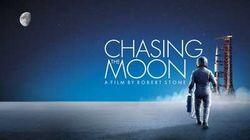
Chasing the Moon: Earthrise
Part two covers 1964–1968, four heady, dangerous years in the history of the space race, focusing on the events surrounding the Apollo 1 and Apollo 8 missions. As Americans moved through the 60s and reflect on the challenges ahead, many begin to wonder: What exactly is it going to take to beat the Soviets to the moon?
"Chasing the Moon," a film by Robert Stone, reimagines the race to the moon for a new generation, upending much of the conventional mythology surrounding the effort. The series recasts the Space Age as a fascinating stew of scientific innovation, political calculation, media spectacle, visionary impulses, and personal drama. Utilizing a visual feast of previously overlooked and lost archival material — much of which has never before been seen by the public — the film features a diverse cast of characters who played critical roles in these historic events. Among those included are astronauts Buzz Aldrin, Frank Borman and Bill Anders; Sergei Khrushchev, son of the former Soviet premier and a leading Soviet rocket engineer; Poppy Northcutt, a 25-year old "mathematics whiz" who gained worldwide attention as the first woman to serve in the all-male bastion of NASA's Mission Control; and Ed Dwight, the Air Force pilot selected by the Kennedy administration to train as America's first black astronaut.
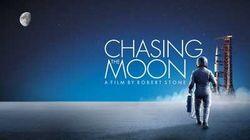
Chasing the Moon: Magnificent Desolation
Part three, which covers 1969–1970, takes Americans to the moon and back. Dreams of space dramatically intersect with dreams of democracy on American soil, raising questions of national priorities and national identity. The final episode also considers what happens to scientific and engineering programs—and to a country—after ambitious national goals have been achieved.
"Chasing the Moon," a film by Robert Stone, reimagines the race to the moon for a new generation, upending much of the conventional mythology surrounding the effort. The series recasts the Space Age as a fascinating stew of scientific innovation, political calculation, media spectacle, visionary impulses, and personal drama. Utilizing a visual feast of previously overlooked and lost archival material — much of which has never before been seen by the public — the film features a diverse cast of characters who played critical roles in these historic events. Among those included are astronauts Buzz Aldrin, Frank Borman and Bill Anders; Sergei Khrushchev, son of the former Soviet premier and a leading Soviet rocket engineer; Poppy Northcutt, a 25-year old "mathematics whiz" who gained worldwide attention as the first woman to serve in the all-male bastion of NASA's Mission Control; and Ed Dwight, the Air Force pilot selected by the Kennedy administration to train as America's first black astronaut.

Woodstock: Three Days that Defined a Generation
In August 1969, nearly half a million people gathered at a farm in upstate New York to hear music. What happened over the next three days, however, was far more than a concert. It would become a legendary event, one that would define a generation and mark the end of one of the most turbulent decades in modern history. Occurring just weeks after an American set foot on the moon, the Woodstock music festival took place against a backdrop of a nation in conflict over sexual politics, civil rights, and the Vietnam War. A sense of an America in transition—a handoff of the country between generations with far different values and ideals—was tangibly present at what promoters billed as "An Aquarian Exposition: 3 Days of Peace and Music."
Woodstock turns the lens back at the audience, at the swarming, impromptu city that grew up overnight on a few acres of farmland. What took place in that teeming mass of humanity — the rain-soaked, starving, tripping, half-a-million strong throng of young people — was nothing less than a miracle of teamwork, a manifestation of the "peace and love" the festival had touted and a validation of the counterculture's promise to the world. Who were these kids? What experiences and stories did they carry with them to Bethel, New York that weekend, and how were they changed by three days in the muck and mire of Yasgur's farm?
Recently Updated Shows

Saturday Night Live
Saturday Night Live is an Emmy Award-winning late-night comedy showcase.
Since its inception in 1975, "SNL" has launched the careers of many of the brightest comedy performers of their generation. As The New York Times noted on the occasion of the show's Emmy-winning 25th Anniversary special in 1999, "in defiance of both time and show business convention, 'SNL' is still the most pervasive influence on the art of comedy in contemporary culture." At the close of the century, "Saturday Night Live" placed seventh on Entertainment Weekly's list of the Top 100 Entertainers of the past fifty years.

American Horror Story
American Horror Story is an horror television anthology series. Each season is conceived as a self-contained miniseries, following a disparate set of characters and settings, and a storyline with its own beginning, middle, and end. While some actors appear for more than one year, they play completely different roles in each season.
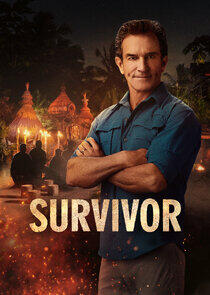
Survivor
Eighteen to twenty castaways will compete against each other on Survivor. All castaways will compete to outwit, outplay, outlast and ultimately be crowned Sole Survivor.

My Life Is Murder
Investigator Alexa Crowe, cannot help fighting the good fight – whether it is solving murders or combatting the small frustrations of everyday life. Fearless and unapologetic, Alexa's unique skills and insights into the darker quirks of human nature, allows her to provoke, comfort and push the right buttons as she unravels the truth behind the most baffling of crimes.
